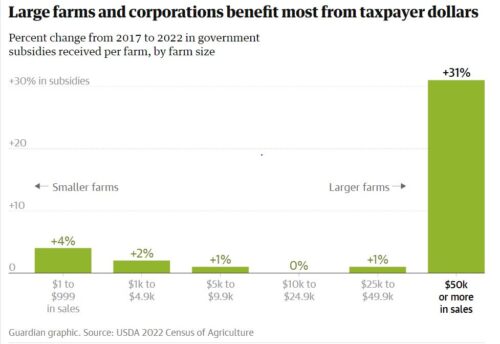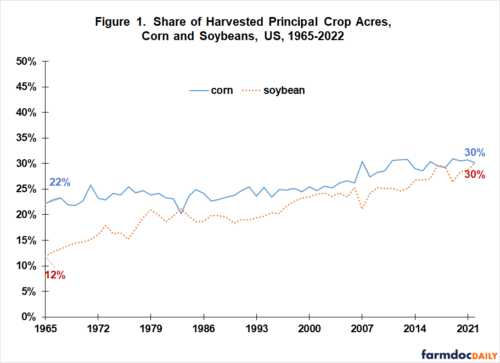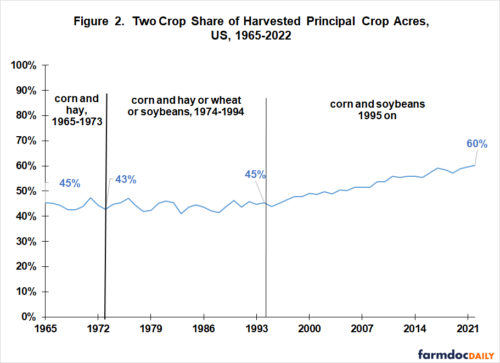USDA’s latest census of agriculture: not an encouraging picture
The USDA announced the latest data on the US agricultural system in a press release. It summarizes the highlights:
- Number of farms: 1.9 million (down 7% from 2017)
- Average size: 463 acres (up 5%)
- Total farmland: 880 million acres of farmland (down 2%), accounting for 39% of all U.S. land.
- Revenues: $543 billion (up from $389 billion)
- Net cash income (less expenses): $152 billion.
- Average farm income: $79,790. A total of 43% of farms had positive net cash farm
- Percent farms with net income: 43%
- Farms selling direct to consumers: 116,617 with sales of $3.3 billion (up 16%)
- Farms with sales of $ 1 million or more: 105,384 (6% of all farms); they sell three-fourths of all agricultural products.
- Farms with sales of $50,000 or less: 1.4 million (74% of farms); they sell 2%.
- Percent of farmland used for oilseeds or grains: 32%
- Percent of farmland used for beef cattle: 40%
- Average age of farmers: 58.1 (up 0.6 years)
- Average age of beginning farmers: 47.1
The 2022 census information is so complicated to access that the USDA provides a video on the main site to explain how to use it. This helps—a lot.
The site for the full report is here. For the full report itself, go here.
Highlights are here.
Most of the data refer to industrial crops like corn and soybeans: feed for animals, fuel for automobiles.
If you want to know about food for people , you can looik at Table 36. Vegetables, Potatoes, and Melons Harvested for Sale: 2022 and 2017
All of this is in miserable-to-read tables. Fortunately, The Guardian to the rescue: ‘America is a factory farming nation’: key takeaways from US agriculture census.
It provides illuminting charts based on the data. For example:

What more to say? Only that our agricultural system needs a major refocusing on smaller, diverse, regenerative farms producing food, as well as those producing animal feed. We should not be growing food crops to produce automobile fuel.



